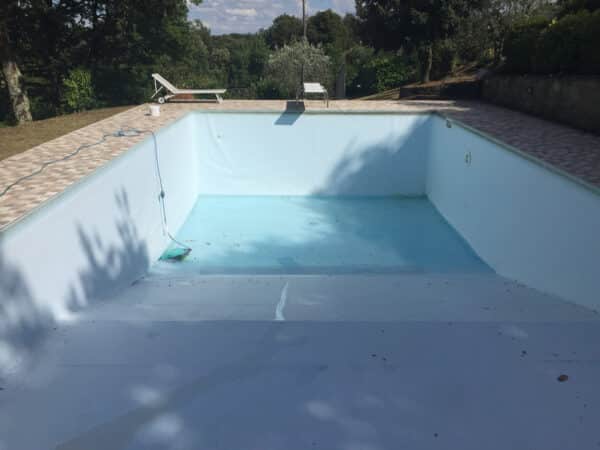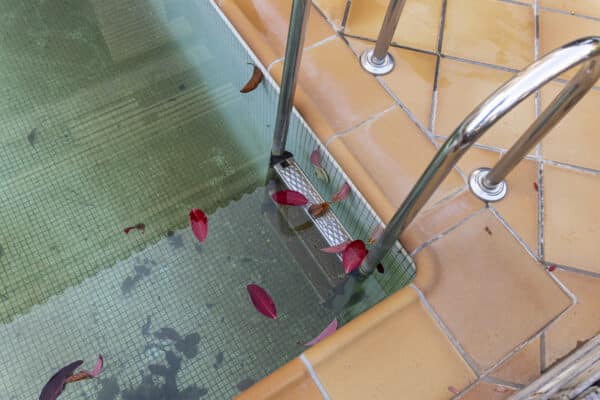When it comes to creating one’s own backyard oasis, a swimming pool tends to be a central focus (especially in the Arizona desert!). However, for those that are planning a backyard remodel or building out a new backyard complete with pool and landscaping, Aquaman Pools LLC Founder Chad Nikkel notes that landscaping can actually greatly impact pool care and costs. He explains why, and shares the recommendations of AMS Landscaping’s Eli Hall when it comes to some of the best (and worst) poolside vegetation.
While pool owners may think planting large trees and lots of plants and shrubs around the pool is a good idea for shade and ambiance enhancement, it’s important to note that excess debris in the pool is a really big deal — and can increase maintenance costs. Nikkel notes that when trees are close to the pool or even hang over it, they can drop leaves, pods, flowers and other debris into the pool, which create what he refers to as “organic load.” Essentially, this equates to the necessity of more chemicals and additional maintenance to manage.
Because of this excess debris, the pool will require more sanitizer in the way of chlorine to keep the water at a safe balance for family swimming and also keep it free of algae, bacteria and viruses. The extra chemicals will basically be working to disintegrate this debris and more chemicals equal more money. In addition to requiring more chemicals, having a lot of shedding landscaping around the pool will require more cleaning/skimming and removal of that debris. So, pool owners may need to up their pool service to two times a week instead of one, which will increase service costs. Nikkel estimates that improper landscaping around the pool can nearly double pool maintenance costs.
Nikkel notes trees that simply drop leaves one time a year or during a short period won’t cause dramatic cost increase, and turns to Eli Hall to suggest some ideal poolside landscaping. Hall recommends options such as live oak and Chinese pistache trees for near-pool landscaping While live oaks grow more slowly, they have very little to no shed; meanwhile the Chinese pistache grows faster and larger. However, the latter does lose all of its leaves annually, but in a short period in the winter when the leaves experience a color change.
When it comes to bushes and shrubs around the pool, Nikkel reminds homeowners that it’s important to keep access ways to the pool clear for safety reasons (not to mention to be up to code). From a landscaping perspective, Hall suggests homeowners plant flowering shrubs or bushes that drop leaves away from the pool or keep existing ones trimmed back. He says any vegetation with small leaves or flowers (such as bougainvillea) leads to big mess in and around the pool so instead he suggests brightly blooming hibiscus or desert shrubs such as Texas sage.
For existing landscaping that does shed (common ones are sweet acacias and palo verde trees, which produce those beautiful yet tiny yellow blooms), keep them trimmed back from the pool as much as possible and maintain a routine of skimming as much debris out of the pool as possible. For more landscaping tips, visit www.azlawns.com, and as always, Aquaman Pools is standing by for any pool questions or service needed!


